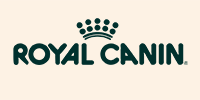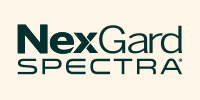We all love our pets and want to see them happy and healthy, so they can live their best lifes! Which is why we want to feed them nothing but the best. But with so much information and so many choices out there, it can get confusing. So, why choose premium pet food, and what does “premium” really mean?
What makes an ideal pet food?
Well truth be told, there are no secrets when it comes to what is considered an ideal pet food.
It needs to be;
- Palatable: Not just tasty, but appealing in flavour, aroma, texture and even shape.
- Complete and balanced: Contains all the nutrients a pet needs in the right proportions.
- Easy to digest: Allowing pets to gain maximum nutritional value from the diet.
- Appropriate caloric density: Provides the right amount of energy based on age and activity level.
- Appropriate for that pet’s life stage: Meeting varying nutritional needs throughout a pet’s life.
- Safe and fit for purpose: Ensuring the food is free from contamination or harmful organisms and items that could cause harm eg bone pieces that can fracture teeth or lodge in the gut.
What makes a pet food truly premium?
Life stage nutrition
Premium foods are designed for specific life stages (e.g. puppy, adult, senior). Foods aimed at “all life stages” or for “growth and maintenance” may sound like a great idea as you can feed the one diet throughout your pet’s life. However, these diets need to contain the right levels of nutrients (energy, fat, minerals) to meet the needs of growing puppies or kittens, which means they may contain an excess of certain nutrients for an adult or mature pet which may lead to problems such as obesity. A premium food is complete and balanced for its nutritional purpose.
Nutritional profile
Premium foods meet the nutritional profiles defined in a globally recognised International Nutritional Publication (INP), such as the Association of American Feed Control Officials AAFCO Official Publication in the US, or the FEDIAF Nutritional Guidelines in Europe. Premium foods manufactured outside of Europe often contain an AAFCO statement on the label:
“Food ‘x’ is formulated to meet the nutritional levels established by the AAFCO Dog Food Nutrient Profiles for maintenance of adult dogs” meaning the food meets the nutrient requirements of the guideline on paper. However, the food has not been fed to an animal under the conditions of an AAFCO feeding protocol to confirm that the animal can effectively digest and use those nutrients.
“Animal feeding tests using AAFCO procedures substantiate that food ‘x’ provides complete and balanced nutrition for maintenance of adult dogs” meaning the food has passed an AAFCO feeding trial where it was fed as the sole diet to dogs and cats for at least six months. During the feeding trial the animals undergo regular clinical examinations, weight checks and blood tests to ensure they remain healthy. This method provides greater assurance that a food is fit for the purpose for which it was designed.
Fixed formulation
Many low cost foods have variable rather than fixed formulations. For example, the ingredient list may say beef and/or pork and/or lamb and/or chicken. This means that each batch of food may vary in the ingredients it contains depending on market availability or price. What this means for your pet is that each time you buy the product, the ingredients may be different, which may increase the chance of gastrointestinal upsets. Maintaining a fixed formulation, as is used in premium foods, is more costly than a variable formulation, but you can be reassured that your pet is receiving consistent nutrition every time.
High quality ingredients
Premium diets use top-quality ingredients, though labels might not reflect this. Manufacturers are not allowed to include a quality statement in the ingredient list e.g “A” grade yellow corn may be the actual ingredient, but the ingredient can only be listed as “corn” on the label ingredient list. This inability to express ingredient quality means you cannot tell anything about the ingredient quality simply by looking at the label. The use of chicken meal is a classic example – premium diets will contain high quality chicken meal (with minimal to no bone content – AKA “low ash”), whereas lower quality diets will contain lower quality meals which contain a significant amount of bone and hence excess minerals. The only way you can determine quality is by looking at the label or speaking to the manufacturer to determine ash and/or mineral content.
There are also other ingredients that may be included in premium diets for health benefits. Examples include antioxidants which helps support a healthy immune system, and Omega-3 and -6 fatty acids which promote healthy skin and coat.
Additional benefits of premium food
- Strong veterinary recommendation
- 100% money back guarantee
- Commitment to quality and safety, backed by extensive research, development and strict quality control measures
- Customer service available for support and enquiries
Summary of benefits
Premium pet foods offer many benefits compared to non-premium pet food, including:
- Fixed formulation from batch to batch, reducing risk of digestive upset.
- Higher and consistent ingredient quality.
- Easy to digest ingredients, so your pet can readily absorb the nutrients.
- High levels of omega fatty acids, contributing to healthy skin and coat.
- High levels of antioxidants to support a healthy immune system.
- Appropriate amounts of protein for a pet’s life stage which decreases unnecessary workload on organs such as the kidneys.
- Appropriate levels of fat to reduce the risk of obesity.
- Low ash content (mineral content from bone in animal meals) which avoids feeding excesses in minerals, such as calcium and phosphorus.
- Controlled levels of minerals such as salt, a taste enhancer, to support good kidney and heart health.
Why premium food may cost less than you think
While premium pet food might seem more expensive, you generally feed smaller amounts because it’s more nutrient-dense and digestible. This means less waste (smaller poos) and, ultimately, a comparable daily cost to non-premium foods.
Understanding the difference between premium and non-premium pet foods helps you make informed choices for your pet’s diet. Premium pet foods offer many benefits, ensuring your furry friend stays healthy and happy.
Happy feeding (and loving) your pet.








